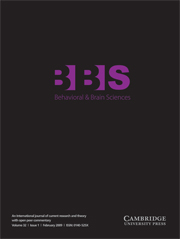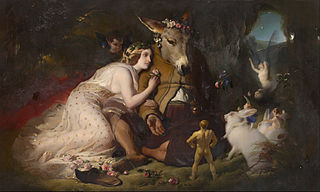
Creativity is a characteristic of someone that forms something novel and valuable. The created item may be intangible or a physical object. Creativity enables people to solve problems in new or innovative ways.

Links between creativity and mental health have been extensively discussed and studied by psychologists and other researchers for centuries. Parallels can be drawn to connect creativity to major mental disorders including bipolar disorder, schizophrenia, major depressive disorder, anxiety disorder, OCD and ADHD. For example, studies have demonstrated correlations between creative occupations and people living with mental illness. There are cases that support the idea that mental illness can aid in creativity, but it is also generally agreed that mental illness does not have to be present for creativity to exist.
Albert Rothenberg is an American psychiatrist who has carried out long term research on the creative process in literature, art, science and psychotherapy. As Principal Investigator of the research project Studies in the Creative Process, Rothenberg has focused on the creative processes of consensually recognized and defined creators. These have included Nobel laureates in physics, chemistry, medicine and physiology; Pulitzer Prize and other literary prize winners; and consensually designated young literary and artistic creators.
Creative writing is any writing that goes outside the bounds of normal professional, journalistic, academic, or technical forms of literature, typically identified by an emphasis on narrative craft, character development, and the use of literary tropes or with various traditions of poetry and poetics. Due to the looseness of the definition, it is possible for writing such as feature stories to be considered creative writing, even though it falls under journalism, because the content of features is specifically focused on narrative and character development. Both fictional and non-fictional works fall into this category, including such forms as novels, biographies, short stories, and poems. In the academic setting, creative writing is typically separated into fiction and poetry classes, with a focus on writing in an original style, as opposed to imitating pre-existing genres such as crime or horror. Writing for the screen and stage—screenwriting and playwriting—are often taught separately, but fit under the creative writing category as well.
James C. Kaufman is an American psychologist known for his research on creativity. He is a Professor of Educational Psychology at the University of Connecticut in Storrs, Connecticut. Previously, he taught at the California State University, San Bernardino, where he directed the Learning Research Institute. He received his Ph.D. from Yale University in Cognitive Psychology, where he worked with Robert J. Sternberg.

Behavioral and Brain Sciences is a bimonthly peer-reviewed scientific journal of Open Peer Commentary established in 1978 by Stevan Harnad and published by Cambridge University Press. According to the Journal Citation Reports, the journal has a 2022 impact factor of 29.3.
Feminist Studies is a peer-reviewed academic journal covering women's studies that was established in 1972. It is an independent nonprofit publication housed at the University of Maryland in College Park, Maryland. Besides scholarly articles, the journal also publishes creative writing, artwork and art essays, book reviews, political and social commentaries, interviews, and activist reports.
Nancy Coover Andreasen is an American neuroscientist and neuropsychiatrist. She currently holds the Andrew H. Woods Chair of Psychiatry at the Roy J. and Lucille A. Carver College of Medicine at the University of Iowa.

Computational creativity is a multidisciplinary endeavour that is located at the intersection of the fields of artificial intelligence, cognitive psychology, philosophy, and the arts.

The majority of studies on sleep creativity have shown that sleep can facilitate insightful behavior and flexible reasoning, and there are several hypotheses about the creative function of dreams. On the other hand, a few recent studies have supported a theory of creative insomnia, in which creativity is significantly correlated with sleep disturbance.
Teresa M. Amabile is an American academic who is the Edsel Bryant Ford Professor of Business Administration in the Entrepreneurial Management Unit at Harvard Business School.

Psychology of Aesthetics, Creativity, and the Arts is a quarterly peer-reviewed academic journal published by the American Psychological Association. The journal covers research on the psychology of the production and appreciation of the arts and all aspects of creative endeavor. The current editors-in-chief are Roni Reiter-Palmon and Pablo Tinio. The founding co-editors of the journal were Jeffrey Smith, Lisa Smith, and James C. Kaufman.
The Creative Education Foundation (CEF) is a non-profit U.S. membership organization dedicated to creativity and problem solving, founded in Buffalo, New York, in 1954.
Marino (Min) Sidney Basadur is a teacher, consultant and researcher best known for his work in applied creativity and as the developer Simplexity Thinking System for improving workplace innovation & creativity. He is president of Basadur Applied Creativity and professor emeritus of organizational behavior and innovation at McMaster University's Michael G. DeGroote School of Business.
John Baer is a professor of Educational Psychology at Rider University in New Jersey. He earned his B.A. from Yale University and his Ph.D. in cognitive and developmental psychology from Rutgers University.
The Creativity Research Journal is a quarterly peer-reviewed academic journal that covers research into all aspects of creativity. The editor-in-chief is Adam Green (neuroscientist). The journal was established in 1988 and is published by Taylor & Francis.
Thinking Skills and Creativity is a quarterly peer-reviewed academic journal that covers research into the teaching of thinking skills and creativity. The editors-in-chief are Pamela Burnard and Emmanuel Manalo. The journal was established in 2006 and is published by Elsevier.
Robert Keith Sawyer is an American psychologist. He is an expert on creativity, collaboration, and learning. He has published 19 books and over 100 scientific articles. His best-known books are Group Genius, Zig Zag, and Explaining Creativity. Fifteen of his books have been translated into other language editions, primarily Chinese Japanese, and Korean. He is the Morgan Distinguished Professor in Educational Innovations at University of North Carolina at Chapel Hill.
Jack A. Goncalo is Professor of Business Administration and the Robert and Helen Seass Faculty Fellow at the Gies College of Business, University of Illinois, Urbana-Champaign.
Gregory John Feist is an American psychologist and Professor of Psychology at San Jose State University. He has published in the psychology of creativity, personality, psychology of science, motivated reasoning, the psychology of science, and the development of scientific talent.





